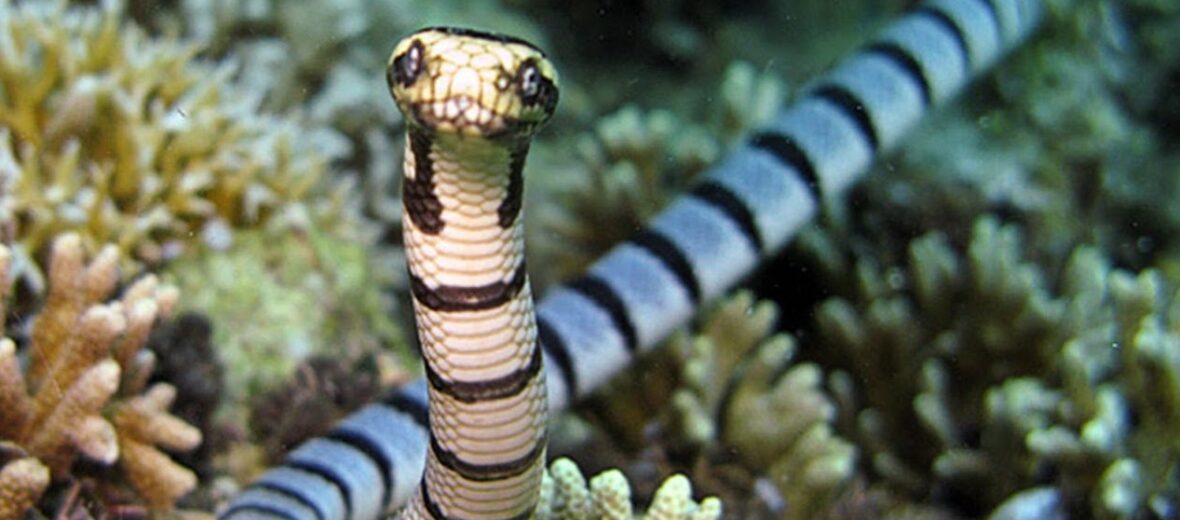
Touted as being the most venomous sea snake in the world, it’s the faint-banded (or Belcher’s) sea snake. The Belcher’s sea snake, is an elapid (a family of venomous snakes) sea snake that resides in the Philippines: Visayan area, Panay, New Guinea, Gulf of Thailand, Australia (North Territory, Queensland), Solomon Islands. They are also found in and around the Ashmore Reef in the Timor Sea off northwest Australia; also New Caledonia. It has a timid temperament and normally has to be subjected to extreme mishandling before biting.
First the Stats…
Scientific name: Hydrophis belcheri
Weight: Up to 3+ lbs.
Length: Up to 3 feet
Lifespan: Up to 5 years
Now on to the Facts!
1.) Being a timid snake species, they rarely bite humans and when they do they rarely envenomate. Most of the people bitten are fisherman handling nets and only about 25% of those bitten are envenomated.
2.) They are predated by sharks, moray eels, and humans.
3.) Like other sea snakes, it has a paddle-like tail which helps make it an excellent swimmer.
4.) The faint-banded sea snake eats a variety of fish and shellfish.
5.) It can hold its breath for up to 7 – 8 hours!
But wait, there’s more on the faint-banded sea snake!
6.) The faint-banded sea snake has been mistakenly called the “hook-nosed sea snake” (which is actually a different species called Enhydrina schistosa).
7.) Because of the small size of their fangs, bites are not very painful and may not even be felt at all. The first symptoms appear approximately 30 minutes to a few hours after the bite, by that time, you’ll know you’ve been bitten and envenomated.
Did you know…?
Although considered as the most venomous snake in the world, this has never been officially proven. It’s venom does make it the most venomous sea snake in the world. However, this has also not yet been proven.
8.) Timid and reluctant to bite as they are, they should be left alone. A single bite’s venom yield can be potent enough to kill numerous adult humans. Their venom has been touted as being stronger than the taipan’s.



